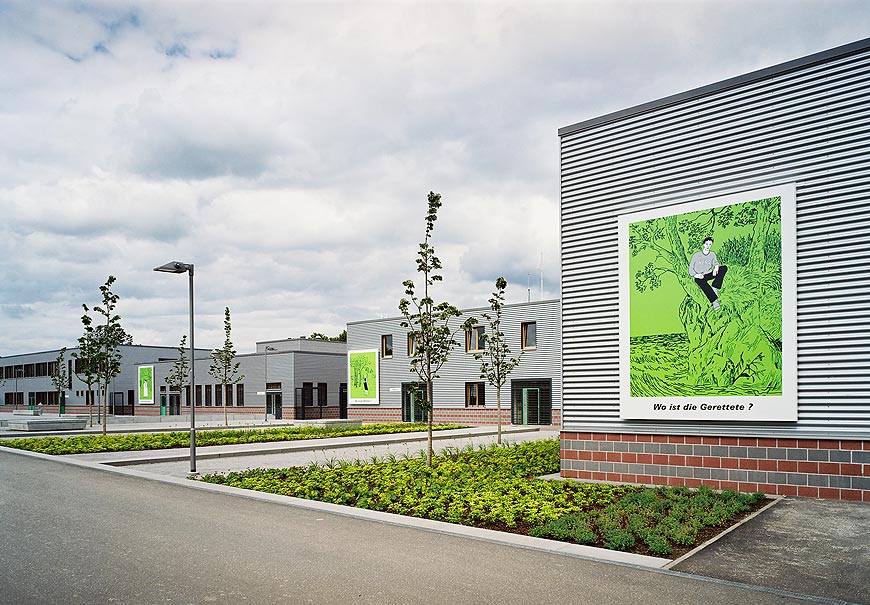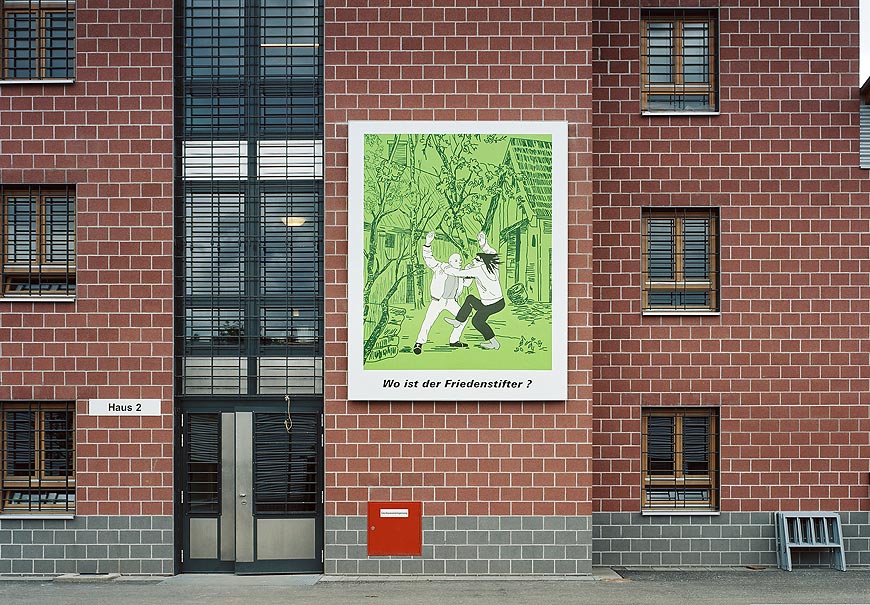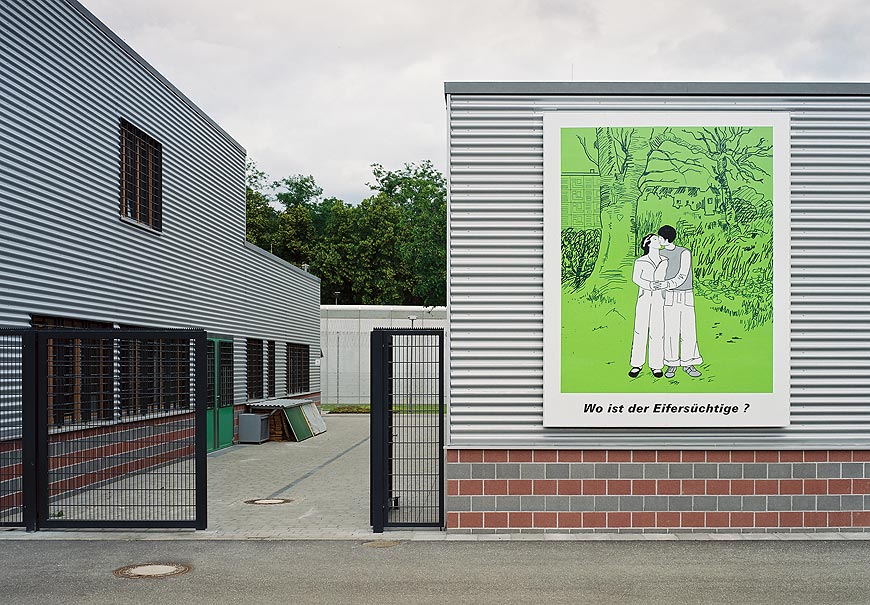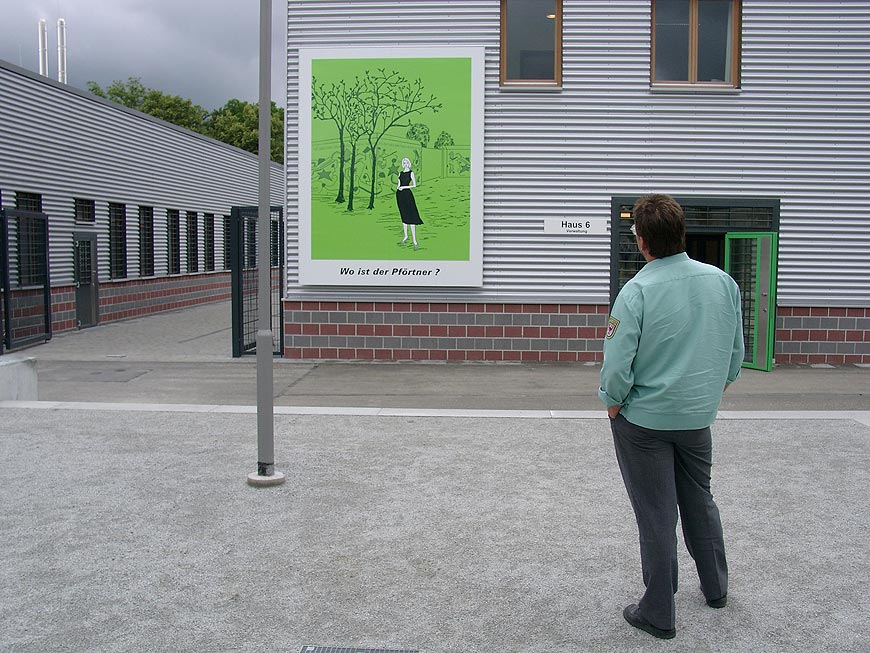Suchbilder (Hidden Figure Puzzles) - 2004
Closed competition, Wrietzen Young Offenders’ Prison, 1st prize, realized 2004
Auto paint on Aludibond, four motifs à 440x300 cm


Four facades of the buildings adjacent to the green play host to screen prints measuring 3 x 4.40 m each. They are printed using lightfast inks on Aludibond and hung slightly away from the facade.
The screen prints show puzzle pictures where the viewer is asked to look for specific figures hidden in the image. The choice of motifs was guided by the location, the young offenders’ prison: the hidden figures are the porter, the peacemaker, the jealous man and the rescued woman.
The pictures are loosely related to the function of the various buildings: the “rescued woman” hangs on the hospital, the “porter” on the administrative wing with visiting rooms, etc..
These puzzles pose a challenge; they appear simple but contain an element of vexing, teasing and making fun of the viewer.
Behind their apparent simplicity lurks the hidden element that demands to be revealed via a mixture of pleasure and burning curiosity.
Only when habitual modes of seeing have been overcome does the hidden form become visible, creating a moment of pleasure in the experience of such optical switching, of being able to see differently.
For me, the phenomenon of these puzzle pictures is a fitting parable for human being-in-the-world: seeing more in the everyday adds colour to life, sensing awkwardness and the dissolution of (visual) blockades adds rhythm.
The idea for the puzzle pictures was based on how I imagined a period of imprisonment. Although I was aware of the inmates’ regulated daily routine of work and counselling, the main emphasis was on notions of having time and of extended periods spent staring at a single spot in the hope that a change will take place.
On the surface, the selected motifs begin by inviting the viewer to look for the named persons. But both the motifs and the questions can also be read in more profound, more ambivalent, and even highly contradictory ways. In the case of a pair of lovers, for example, one might not always immediately think of the other side of the coin, of jealousy. And a rescued woman might be expected to have a more cheerful rescuer; but perhaps she hasn’t been rescued, as she doesn’t look especially lively herself. Is the peacemaker raising his own fist, or is he really just a prudent if energetic arbitrator? Why is a lightly clad woman asking for a porter, and who spray-painted the wall?
Solving puzzles is one of the oldest forms of entertainment, and it always has to do with mental agility. Pictures with hidden figures of this kind were especially popular in the 19th century when they were published in magazines and books. Today, due not least to our different approach to time, they are not in great demand. But they possessed this short-lived quality from the outset; the reader solved the puzzle and quickly turned the page, the addict avidly searching for new motifs.
In this work, the pictures remain where they are even after the hidden figures have been found, inevitably inviting repeated scrutiny and reading. In this way, they become surfaces for the projection of a succession of different stories for each individual viewer.


































































































